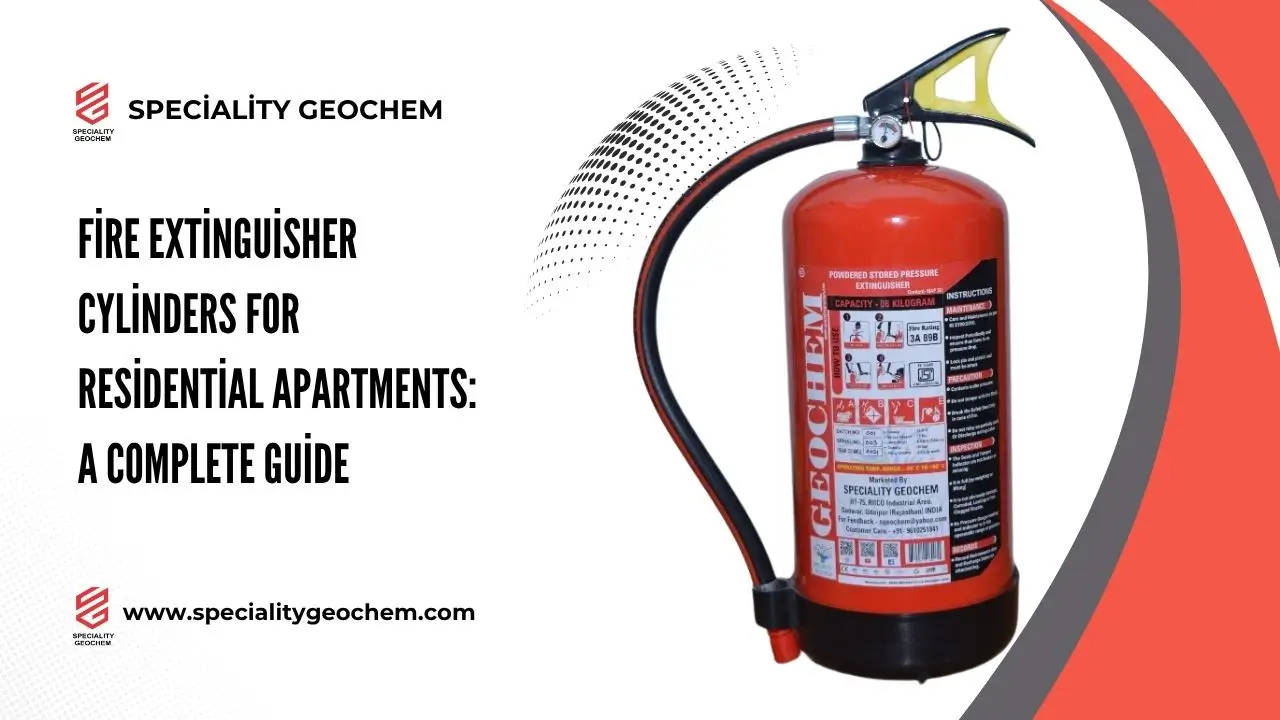Modern apartment complexes have transformed urban living with comfort, security, and amenities. Yet, one often-overlooked aspect of apartment safety is fire protection. In cities where buildings are densely populated and interconnected, a small fire can quickly escalate into a major hazard.
To mitigate this risk, installing Fire Extinguisher Cylinders for Residential Apartments is not just advisable—it’s essential. This guide explains why these cylinders matter, how to choose the right type, and best practices for maintenance and installation.
Why Fire Extinguisher Cylinders Are Crucial for Apartments
Every residential apartment, whether small or large, contains multiple fire hazards—kitchen stoves, electrical appliances, extension cords, and gas cylinders. In emergencies, even a few seconds of delay can make the difference between safety and catastrophe.
Fire Extinguisher Cylinders for Residential Apartments act as the first line of defense. Unlike traditional fire buckets or outdated systems, these modern cylinders are easy to operate, reliable, and designed to tackle multiple fire classes (A, B, C, and electrical fires). Having them on each floor, in corridors, and near elevators ensures quick access during a crisis.
Understanding How Fire Extinguisher Cylinders Work
A fire extinguisher cylinder contains a pressurized extinguishing agent—such as dry chemical powder, carbon dioxide (CO₂), or clean agent gas—designed to interrupt the fire triangle (fuel, oxygen, and heat).
When activated, the cylinder releases its contents through a nozzle, instantly cooling the flames and cutting off the oxygen supply.
For residential apartments, dry chemical cylinders are most common because they can suppress a variety of fires, including electrical and kitchen fires.
Types of Fire Extinguisher Cylinders for Residential Apartments
Choosing the right fire extinguisher depends on the nature of potential fire hazards in your building. Below are the most suitable types:
1. ABC Dry Powder Cylinder
Ideal for most apartments, the ABC Dry Powder type can extinguish:
- Class A fires (wood, paper, fabric)
- Class B fires (flammable liquids like oil or petrol)
- Class C fires (electrical and gas)
These are versatile, affordable, and low-maintenance.
2. CO₂ Fire Extinguisher Cylinder
CO₂ extinguishers are perfect for areas with electrical panels, lifts, or generators. They work by displacing oxygen, effectively suffocating the fire. However, they are not recommended for confined spaces without ventilation.
3. Water-Based Extinguisher Cylinder
Used for organic materials such as paper, furniture, and fabric, these cylinders are effective in living areas but must never be used on electrical or oil fires.
4. Clean Agent Fire Extinguisher Cylinder
These use non-conductive gases like HFC-236fa or FE-36 that leave no residue. They are eco-friendly and ideal for luxury apartments with expensive electronics and decor.
5. Kitchen-Specific Fire Cylinders
Specially designed for cooking oil and grease fires, these contain wet chemical agents that cool and seal the oil surface, preventing re-ignition.
Ideal Placement of Fire Extinguisher Cylinders
For maximum safety, strategic placement is key. Here’s a suggested layout for residential buildings:
- Each floor: At least one fire extinguisher near the lift or staircase.
- Kitchens: Wet chemical or dry powder cylinder.
- Basements and parking areas: CO₂ or ABC Dry Powder type.
- Electrical rooms: CO₂ or clean agent type.
- Common corridors: ABC type for general coverage.
Ensure that extinguishers are mounted at an accessible height (between 3.5–5 feet from the ground) and clearly labeled with usage instructions.
Installation and Maintenance Guidelines
Simply purchasing a fire extinguisher isn’t enough—it must be installed and maintained correctly.
- Installation by certified professionals: Engage a qualified technician to mount cylinders securely and inspect valve pressure and gauge readings.
- Monthly visual checks: Residents or building supervisors should check seals, pins, and pressure indicators.
- Annual professional servicing: Refill or replace the extinguishing agent as per manufacturer guidelines.
- Proper training: Residents and security personnel should receive basic training in fire extinguisher use through community safety sessions.
- Marking and labeling: Each cylinder must display its type, date of inspection, and operating instructions.
With regular maintenance, Fire Extinguisher Cylinders for Residential Apartments remain ready to operate instantly in any emergency.
Benefits of Installing Fire Extinguisher Cylinders
1. Immediate Response
Before emergency teams arrive, residents can control small fires themselves, minimizing damage and injury.
2. Enhanced Building Compliance
Local fire departments and housing authorities often require apartment complexes to maintain certified fire extinguishers on each floor. Compliance helps avoid penalties and ensures legal safety.
3. Protection of Life and Property
A single cylinder can prevent large-scale destruction, saving not only material possessions but also human lives.
4. Increased Property Value
Buildings equipped with proper fire safety systems—including Fire Extinguisher Cylinders for Residential Apartments—are viewed as safer and more reliable by tenants and insurance companies.
5. Peace of Mind
Knowing that your apartment is equipped with tested, ready-to-use fire cylinders provides a deep sense of security to every resident.
Common Mistakes to Avoid
- Using the wrong extinguisher type (e.g., using water on an electrical fire).
- Neglecting refills or recharges after use.
- Blocking access with furniture or decorations.
- Skipping inspections, leading to depressurized or expired cylinders.
- Ignoring training, leaving residents unprepared during an emergency.
Avoiding these errors ensures your fire safety system remains effective year-round.
Future Trends in Apartment Fire Safety
Modern technology is making apartment fire protection more efficient and intelligent:
- Smart extinguisher systems that detect pressure loss and send mobile alerts.
- Automatic fire suppression cylinders installed in kitchens or electrical rooms.
- Eco-friendly extinguishing agents replacing traditional chemicals.
- Integration with alarm systems, triggering instant alerts when activated.
These innovations make Fire Extinguisher Cylinders for Residential Apartments more reliable than ever before.
Conclusion
Fire safety is not just a legal requirement—it’s a moral responsibility for every housing society, builder, and resident. Having Fire Extinguisher Cylinders for Residential Apartments is a small investment that ensures large-scale protection. Whether you live in a high-rise apartment or a gated community, proper fire extinguishers can save lives, prevent panic, and protect your hard-earned property.
For reliable fire safety solutions, Speciality Geochem offers certified, easy-to-use fire extinguisher cylinders tailored for residential environments. With high-performance design, durable construction, and nationwide supply, we help ensure every home stays protected—because safety begins with preparedness.

